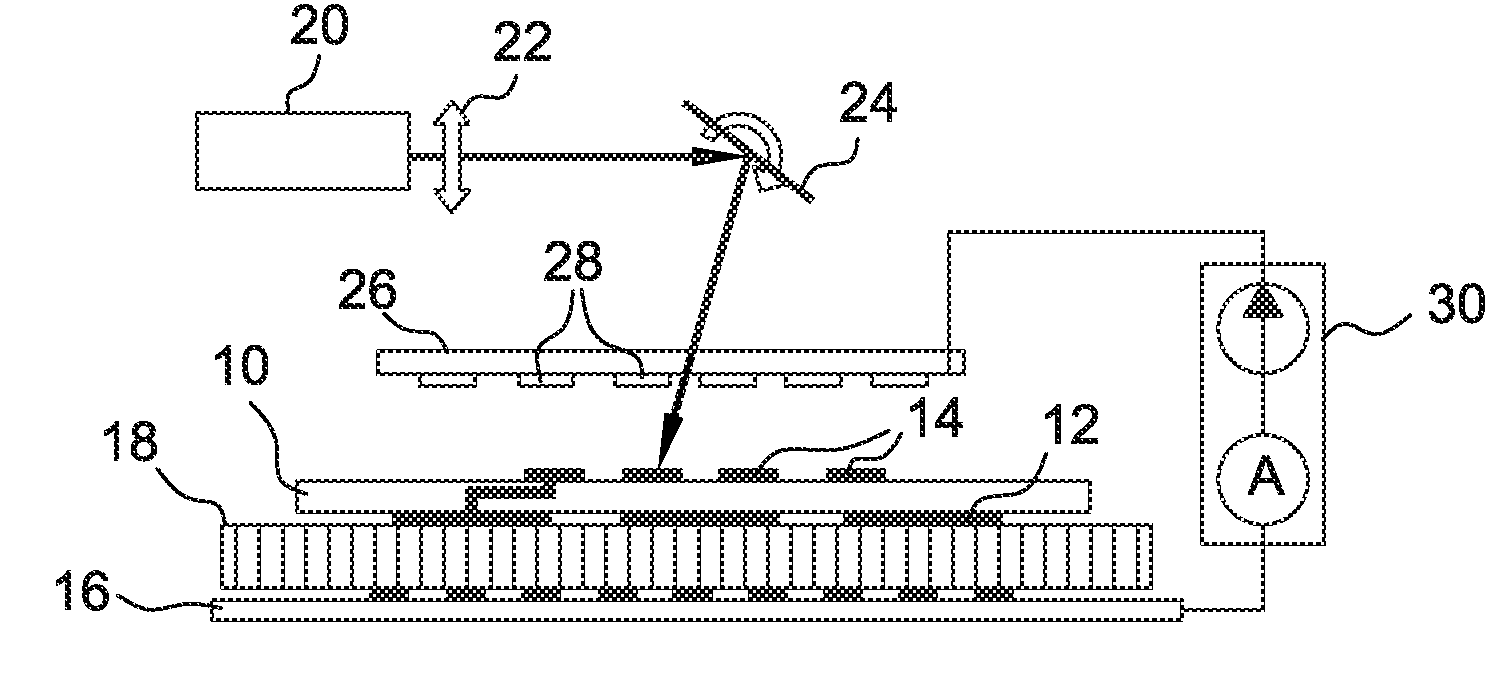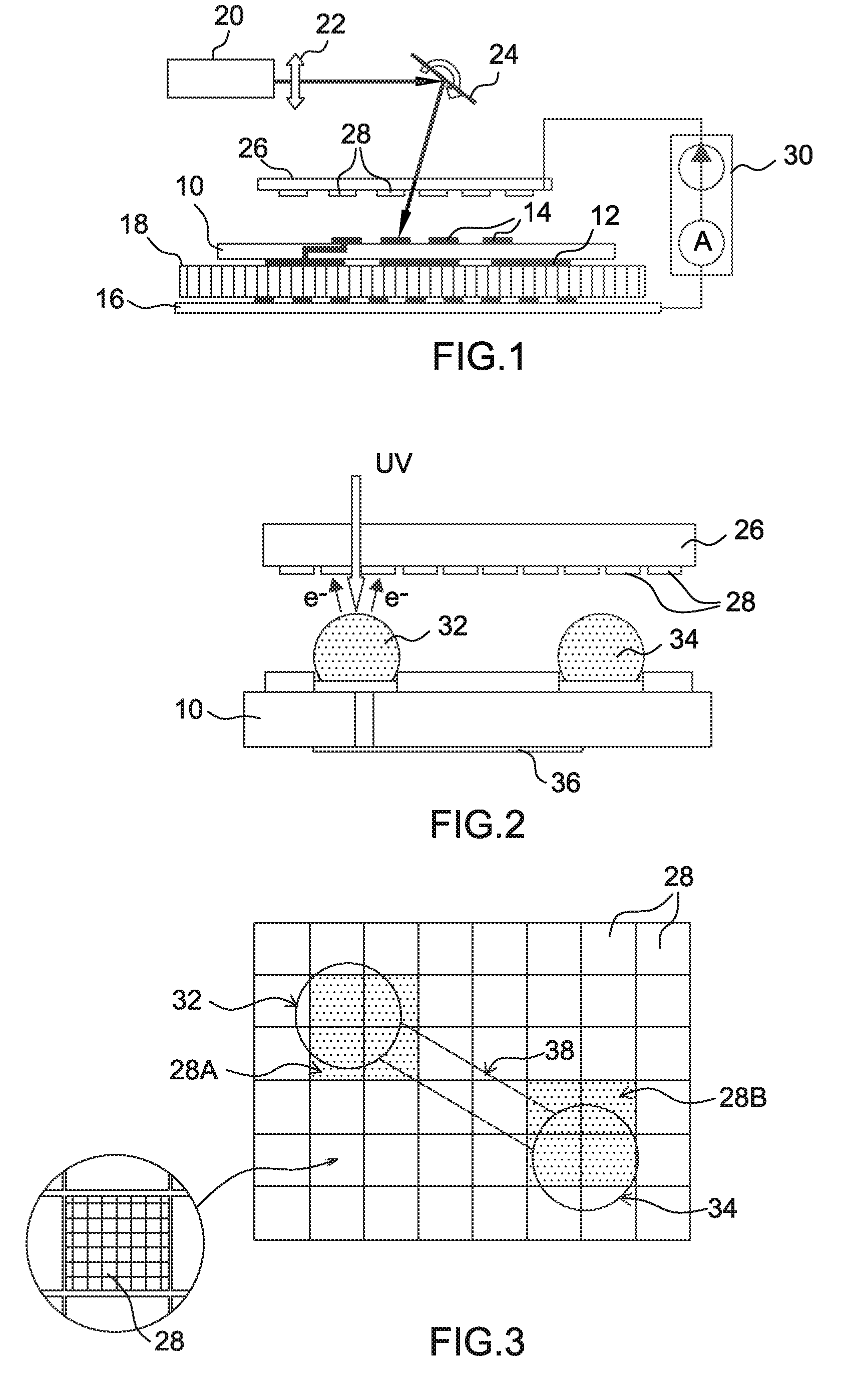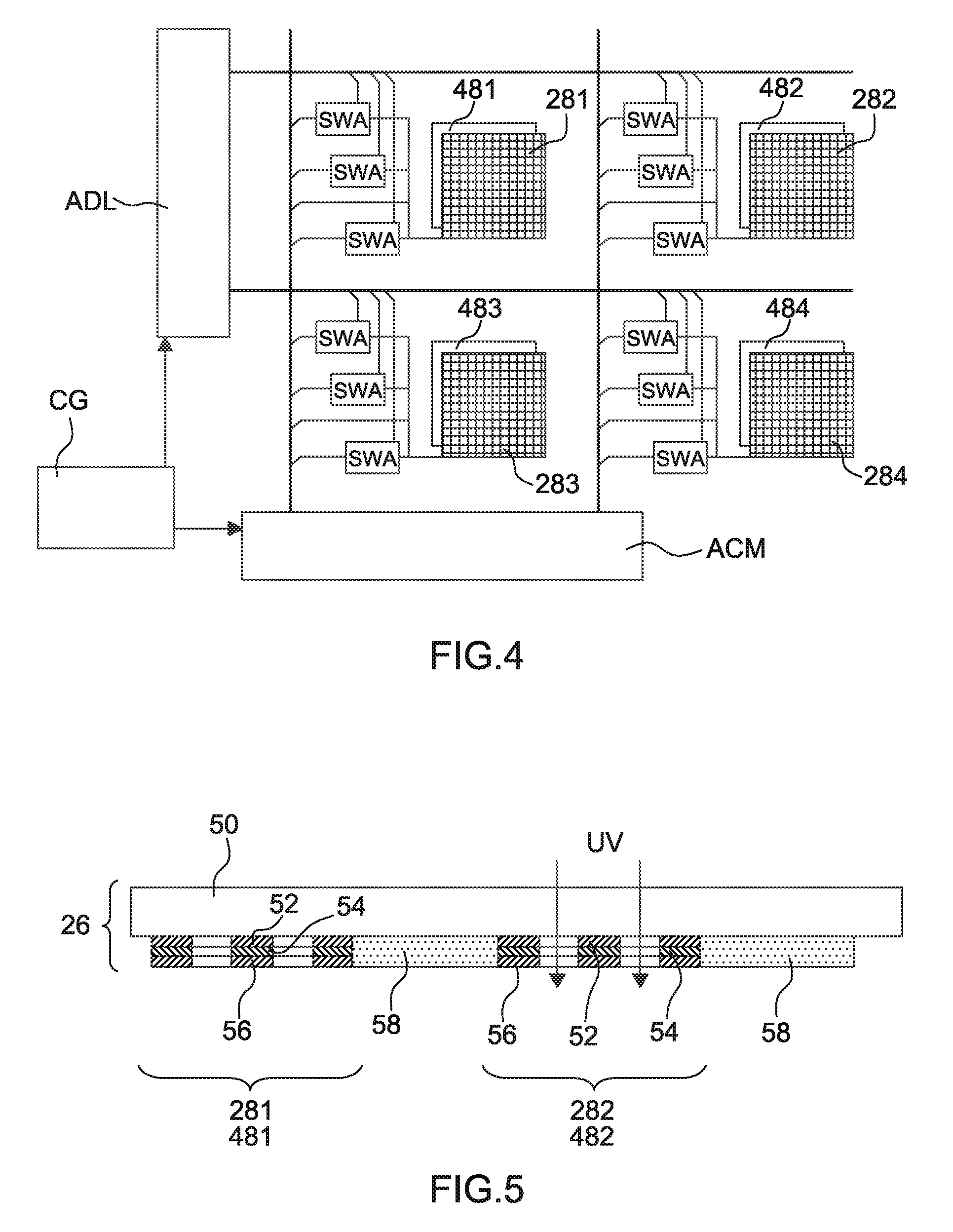Non-contact electrical connections test device
a test device and non-contact technology, applied in electrical testing, electrical testing, electronic circuit testing, etc., can solve the problems of difficult electrical testing and inability to be done by peopl
- Summary
- Abstract
- Description
- Claims
- Application Information
AI Technical Summary
Benefits of technology
Problems solved by technology
Method used
Image
Examples
Embodiment Construction
[0030]The general principle of a non-contact test is shown diagrammatically in FIG. 1. The substrate to be tested is given the reference 10; it is for example of the type known as a “chip carrier” having multiple interconnections between a rear face (at the bottom of the figure) and a front face (at the top of the figure). The rear face is intended to be soldered on a printed circuit and the front face is intended to receive an integrated circuit chip. The connections of the rear face are given the reference 12. They principally comprise soldering areas making it possible to solder the substrate directly onto a printed circuit. The connections of the front face, more dense than those of the rear face, are given the reference 14. These connections 14 principally comprise contact pads, or soldering areas, making it possible to connect, by direct soldering, that area directly to an output pin of a printed circuit chip (soldering of the “flip-chip” type, that is to say with the chip tur...
PUM
 Login to View More
Login to View More Abstract
Description
Claims
Application Information
 Login to View More
Login to View More - R&D
- Intellectual Property
- Life Sciences
- Materials
- Tech Scout
- Unparalleled Data Quality
- Higher Quality Content
- 60% Fewer Hallucinations
Browse by: Latest US Patents, China's latest patents, Technical Efficacy Thesaurus, Application Domain, Technology Topic, Popular Technical Reports.
© 2025 PatSnap. All rights reserved.Legal|Privacy policy|Modern Slavery Act Transparency Statement|Sitemap|About US| Contact US: help@patsnap.com



